Haneda Airport (Japanese: Haneda Kūkō) is also known as Tokyo International Airport (Japanese: Tōkyō Kokusai Kūkō). It is located in Ōta, Tokyo, Japan, 15 kilometers (9.3 miles) south of Tokyo Station.
Haneda Airport received 87 millions passengers in 2019; in terms of passenger throughput, it is the third busiest airport in Asia and the fourth busiest airport in the world, second only to Atlanta International Airport and Beijing Capital International Airport (the busiest in Asia) ) And Dubai International Airport.
Since its expansion in 2018, it has been able to handle 90 million passengers per year. With the combination of Haneda Airport and Narita Airport, Tokyo has the third busiest city airport system in the world, after London and New York.
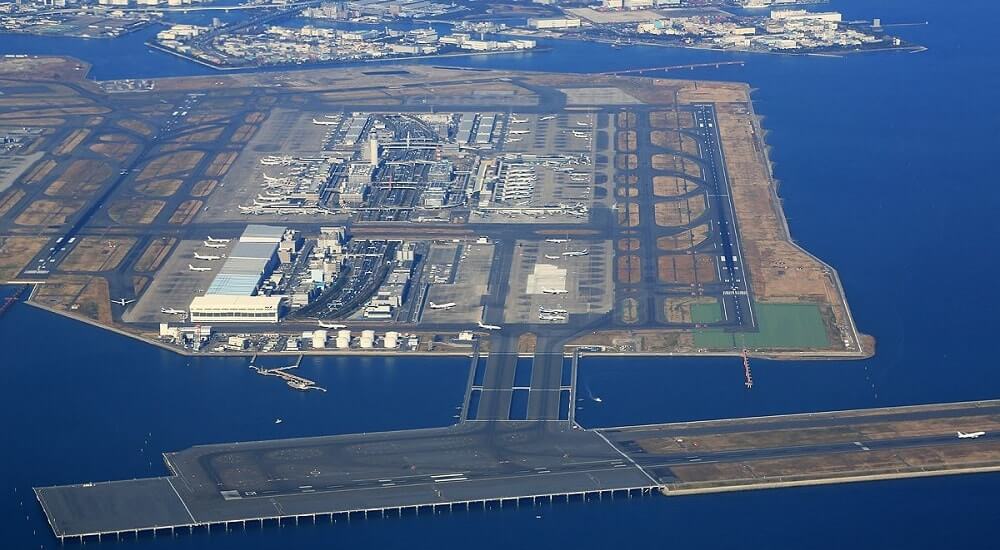
History
- In 1931, Haneda Airport built a 300-meter (980-foot) concrete runway, a small airport terminal and 2 hangars.
- In the 1930s, Haneda Airport handled flights to destinations in mainland Japan, Taiwan, South Korea (all ruled by Japan) and Manchuria (ruled by Manchuria).
- On September 13, 1945, the U.S. occupation forces took over the airfield renamed Haneda Army Air Force Base. The expansion project started in October 1945 and was completed in June 1946. The airport covers an area of 257.4 hectares (636 acres). Haneda Airport is designated as the port of entry for Japan.
- In 1952, the US military returned part of the base to Japan; this part was called Tokyo International Airport. The US military maintained a stronghold in Haneda until 1958 when the remaining assets were returned to the Japanese government.
- Japan Airlines started its first domestic operation from Haneda in 1951.
- In 1955, the first passenger terminal built by a Japanese company opened. As of 1966, the airport had 3 runways.
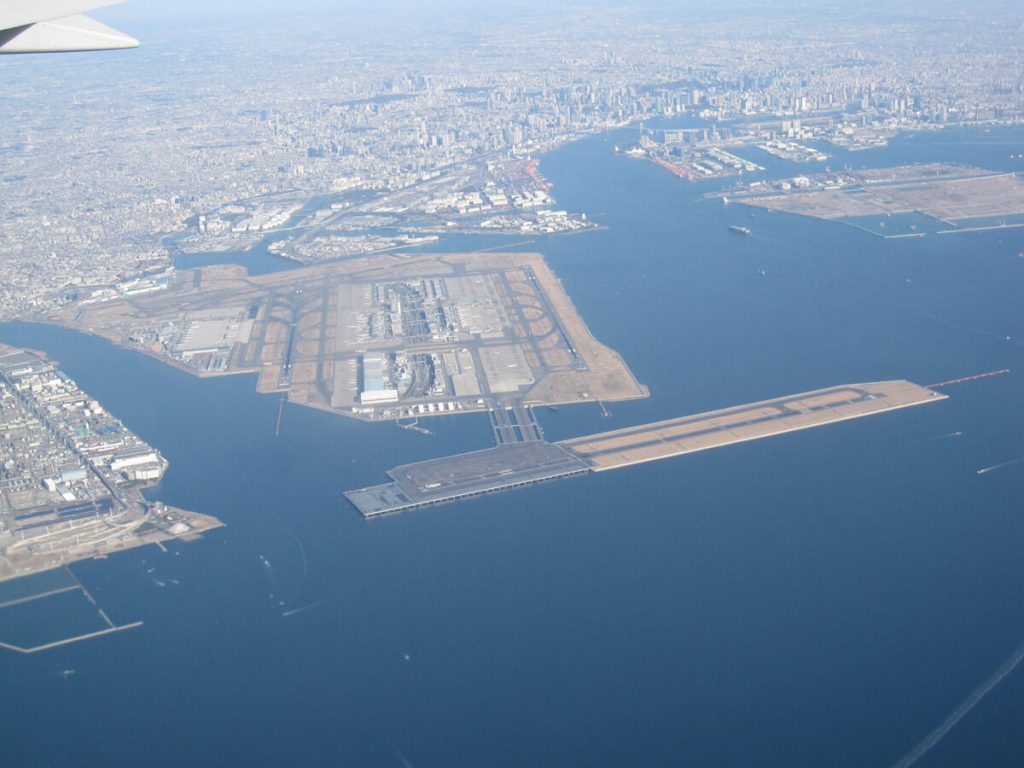
- In 1978, Narita Airport opened an airport and took over almost all international services in the Greater Tokyo area, and Haneda Airport became a domestic airport.
- In September 1993, the old airport terminal was replaced by a new western passenger terminal, which was nicknamed “Big Bird” and was built further away from the landfill.
- The new C (parallel) and B (cross) runways were completed in March 1997 and March 2000, respectively. In 2004, Terminal 2 opened in Haneda.
- In October 2006, Japanese Prime Minister Shinzo Abe and Chinese Premier Wen Jiabao reached an informal agreement to initiate a bilateral dialogue on additional inter-city services between Haneda Airport and Shanghai Hongqiao International Airport. On June 25, 2007, the two governments reached an agreement allowing the Haneda-Hongqiao service to begin in October 2007.
- The third international flight terminal was completed in October 2010. The fourth runway located in the south of the airport was also completed in 2010. The runway is designed to increase Haneda’s operating capacity from 285,000 flights per year to 407,000 flights per year.
- The expansion project of the new international terminal was completed at the end of March 2014. The expansion project includes the construction of an 8-gate pier to the northwest of the existing terminal, and the expansion of four new aircraft parking spots on the adjacent apron, the international terminal.
- After Tokyo won the bid for the 2020 Summer Olympics (postponed to 2021 due to the COVID-19 pandemic), the Japanese government plans to increase the combined flight capacity of Haneda and Narita, and build a new railway line station connecting Haneda Airport and Tokyo for about 18 minute.
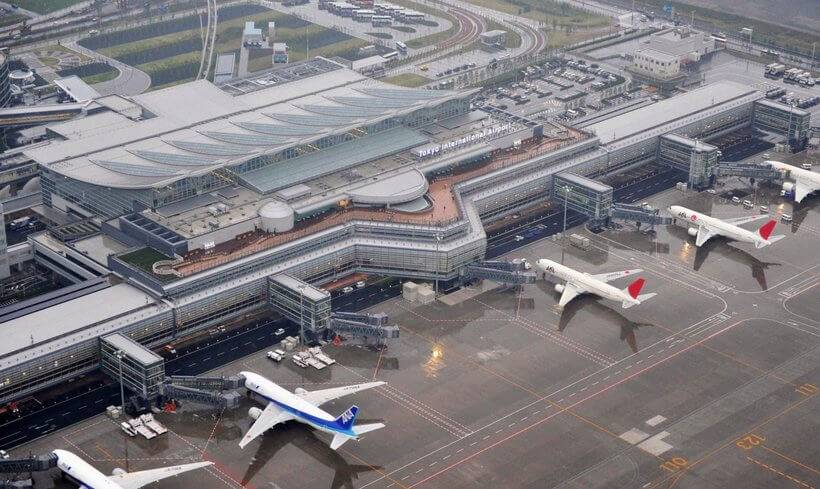
Terminals
There are three passenger terminals at Haneda Airport. Terminals 1 and 2 are connected by underground walkways.
Terminal 1
Terminal 1 was called “Big Bird” and opened in 1993, replacing the smaller 1970 terminal. It is only used for domestic flights in Japan and is served by Japan Airlines, Skymark Airlines and Star Aircraft to Kyushu Island.
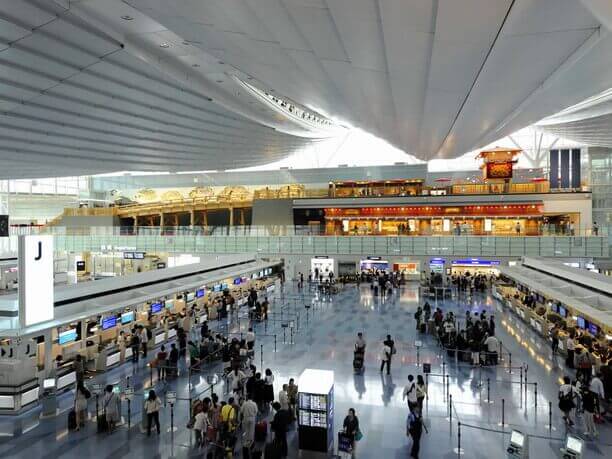
Terminal 2
Terminal 2 opened on December 1, 2004. The terminal has an open-air rooftop restaurant, a six-story shopping area with restaurants, and the 387-room Haneda Excel Tokyu Hotel.
The terminal has gates 51 to 71 allocated for jets, gates 46-48 on satellites, and gates 500 to 511 for buses.
Terminal 3
Formerly known as the International Terminal, Terminal 3 opened on October 21, 2010, replacing the smaller 1998 International Terminal near Terminal 2.
As Terminal 2 started to handle international flights on March 29, 2020, the international terminal was renamed Terminal 3 on March 14, 2020.
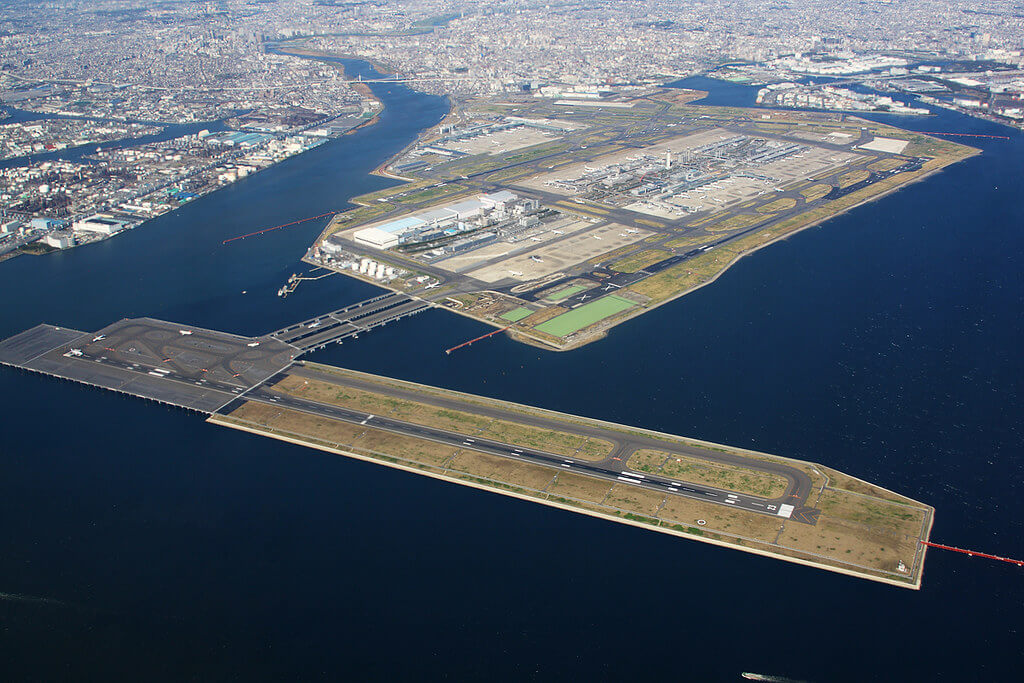
Haneda Airport Data
- Country
- Japan
- Region
- East Asia
- Status
- In use
- Official name
- Tōkyō Kokusai Kūkō
- Other name
- 東京国際空港, Haneda Airport, Haneda Kūkō, 羽田空港
- Location
- Ōta, Tokyo, Japan
- Official website
- tokyo-haneda.com
- Operator
- Civil Aviation Bureau, MLIT (airfield) Japan Airport Terminal Co., Ltd. (Terminal 1 and 2) Tokyo International Air Terminal Corp. (Terminal 3)
- Opened
- Aug-25, 1931
- Airport type
- Public
- Airport code
- IATA: HNDICAO: RJTTWMO: 47671
- Airport area
- 618 acres / 2.5 km²
- Runway length
- 1*3,000 m,1*3,360 m, 2*2,500 m
- Passenger traffic
- 87 million(2019)
View Haneda Airport on Google Satellite Map
Google satellite maps allow you to see building details more clearly, including natural landscapes such as mountains, rivers, deserts, sea and man-made engineering buildings.
If you are very interested in this engineering building, it is a good idea to click below Google Map icon. We will help you jump to the corresponding location of this building or engineering on Google satellite map.





























































